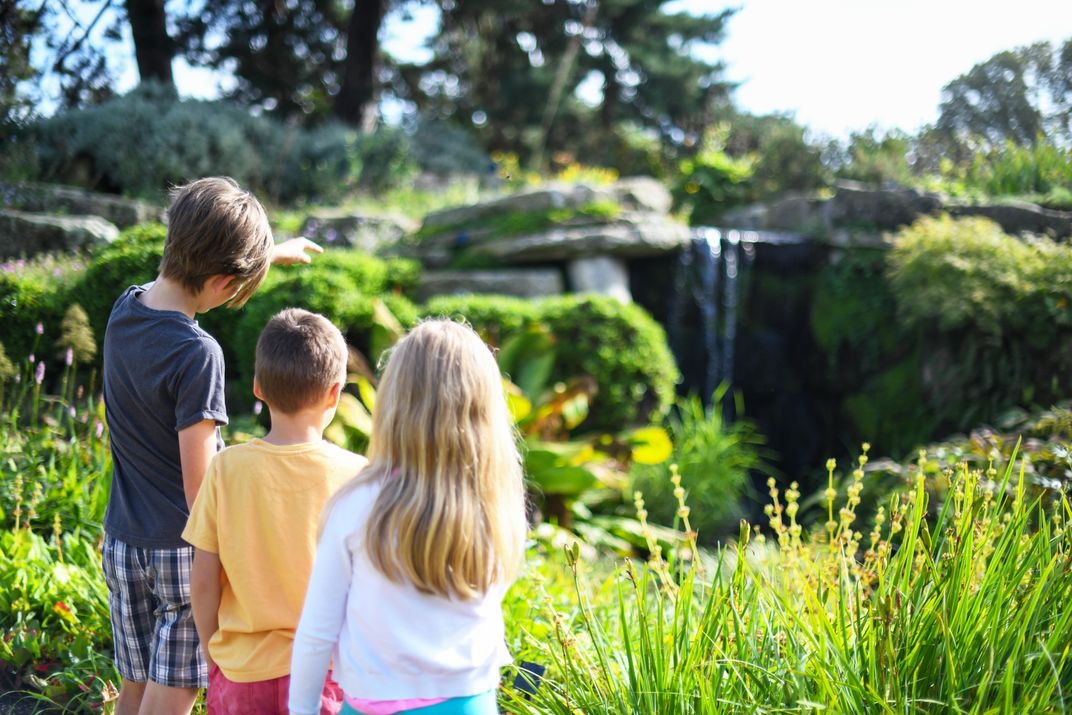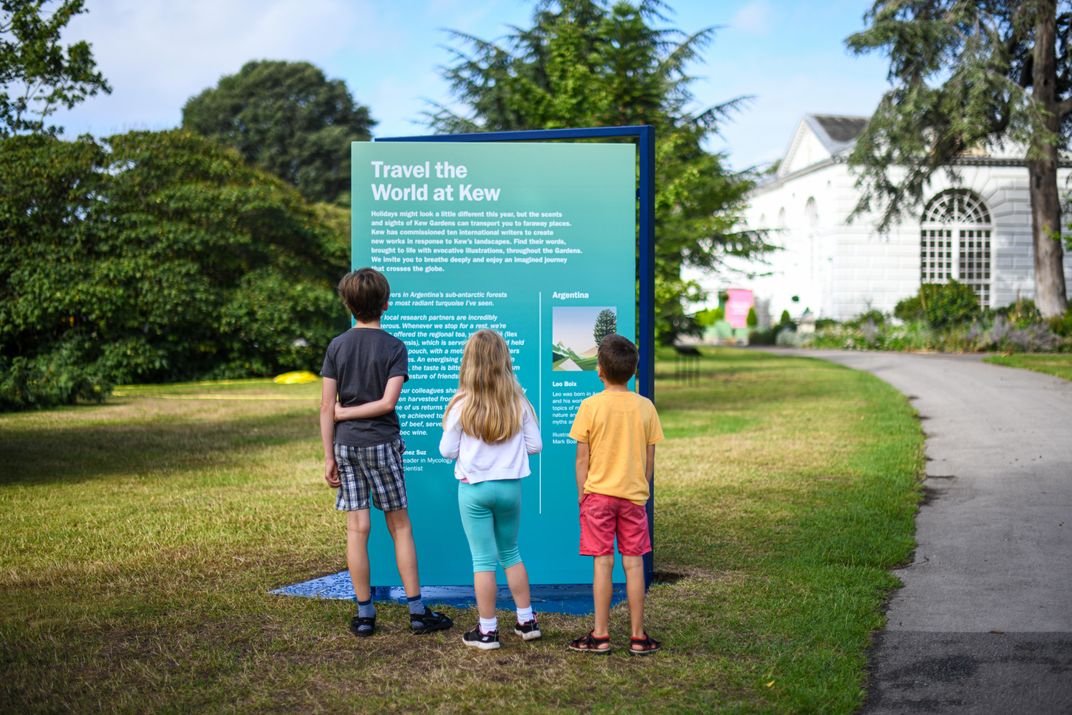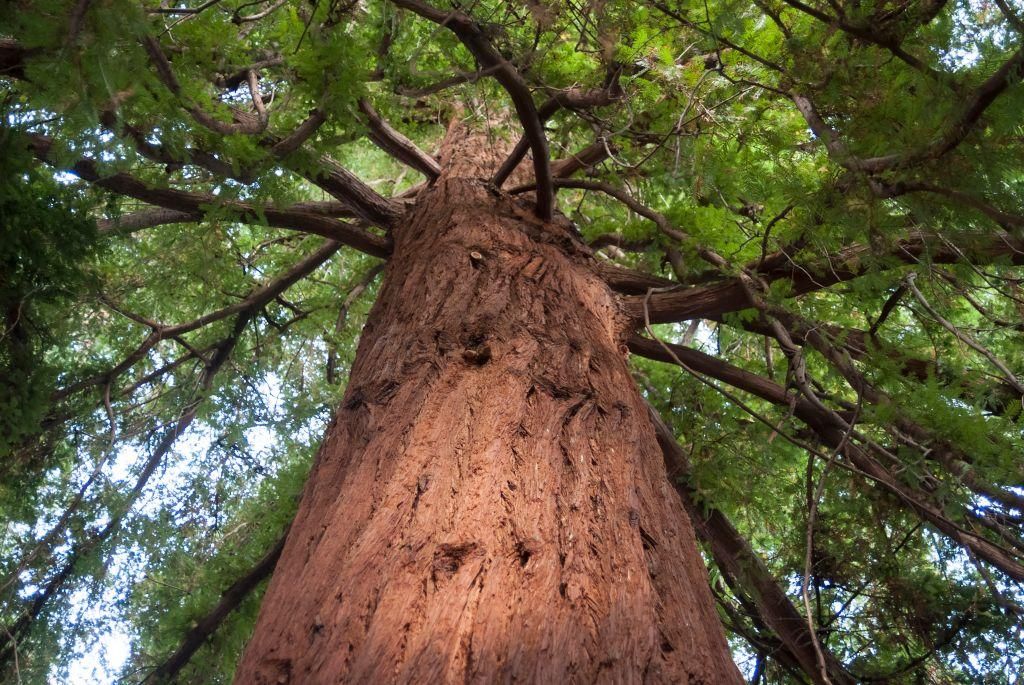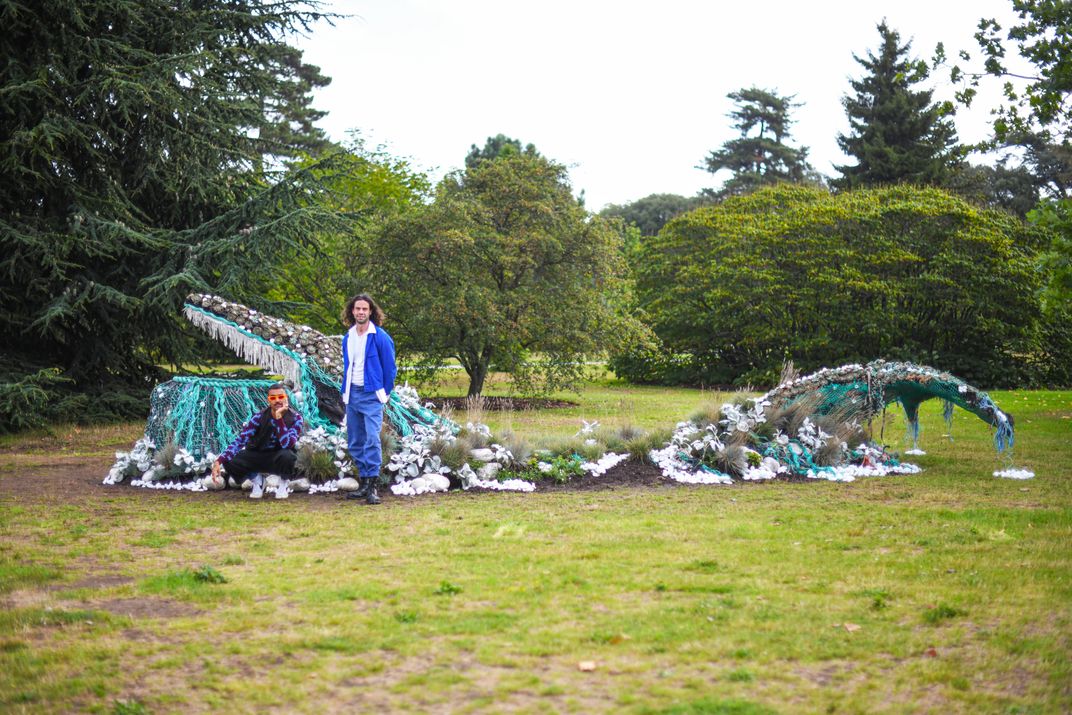Travel the World in a Day at Kew Gardens
A new exhibition at the British botanic garden brings the landscapes of ten countries and regions across six continents to visitors
/https://tf-cmsv2-smithsonianmag-media.s3.amazonaws.com/filer/c2/d5/c2d5975e-a8af-4cef-94c9-218fc54768ea/japanese_gardens_at_kew.jpg)
Even before Covid-19 safety regulations grounded international travel for the unforeseeable future, exploring multiple countries in a single day has always been a logistical challenge. However, a botanic garden located just outside of London, in Richmond, England, has found an innovative way to let people wander the world, minus the worry of changing time zones.
Beginning August 22 and running through October 16, the Royal Botanic Gardens, Kew will host an ambitious—and well-timed for the travel hungry—new experience called “Travel the World at Kew.” The exhibition transports visitors to ten countries and regions across six continents, all within the confines of the 320-acre Unesco World Heritage Site.
“We’re all facing restrictions on travel right now, so we wanted to highlight the diverse landscapes of the world in a way that can satisfy people’s wanderlust,” says Paul Denton, head of visitor programs and exhibitions at Kew Gardens. “‘Travel the World at Kew’ evokes the spirit of [the gardens] and their richness and evokes the relationship people can have with the natural world and how magnificent that relationship can be.”

With a history stretching back to 1759, Kew Gardens started out as a private nine-acre botanic garden founded by Princess Augusta, mother of King George III. It wasn't until 1840 that Kew opened its doors to the public. Today Kew is considered "the largest and most diverse botanical and mycological collection in the world" with some 8.5 million living things representing "95 percent of vascular plant genera and 60 percent of fungal genera." Visitors can view a variety of attractions, including an arboretum that houses 14,000 trees, a rose garden representing 170 different species and cultivars, and a garden dedicated to carnivorous plants like the Venus fly trap.
As a way to promote its globally diverse collection during a time when many of us can't travel internationally, Kew Gardens commissioned a group of about a dozen professional writers with strong connections to different parts of the world to reflect on the selected regions across six continents (minus Antarctica), all of which are represented within the property. These include California’s redwood forests, Japan’s tranquil tea gardens and South Africa’s craggy mountaintops.
“We selected writers that were as diverse as possible and include young and up-and-coming writers who originate from [the country or region] they’re writing about,” Denton says. “That was our starting point. We wanted [each written work] to have an emotional connection with that country, while also being as fun and engaging as possible.”

Jini Reddy, a best-selling book author who was born in London and raised in Montreal, Québec, Canada, created a piece of prose for the gardens’ Canadian maple forest entitled “The Maple Tree.”
“The maple leaf is a symbol of Canada,” Reddy says. “[When I was writing this piece], I was thinking about my childhood in Montreal and being surrounded by maple trees and the beautiful displays of autumn colors.”
In her piece Reddy writes: When I think of the maple tree, I feel something within me ignite, a lightning connection made.
“When I was a child, one of the traditions was maple sugaring, where you boil maple sap into maple syrup,” Reddy says. “As a kid I would go with my school on field trips to the forest and eat snow cones topped with maple syrup. You had this fantastic feast all courtesy of the maple leaf. Maple sugaring was a way to get outdoors while also enjoying something yummy.”

Other authors featured include California-based novelist Joe Cottonwood, who writes about the state’s iconic redwood forests; Yuyutsu RD Sharma, a Himalayan poet who is inspired by rhododendrons, a flowering plant native to the region and that grows in abundance at Kew Gardens; and Tamryn Bennett, a poet who grew up along the South Coast of New South Wales Australia and penned a poem called "Bulu guunamam—Shadow of a Snow Tree." Argentina, China, Spain and the UK are also represented in the exhibition. Each piece of written work is displayed on a large sign in the part of the garden that it represents; the poetry and prose are accompanied by art by illustrator Mark Boardman, whose clients include Variety, NPR and Universal Music.
“Horticulture is there to be seen and causes an emotional response in people,” Denton says. “We’re a global organization and we work together with many different countries around the world. We try to view things from a global standpoint through our programs, not only in places that we work and engage with regularly, but also in locations that people can’t currently visit because of Covid-19. At Kew Gardens, we want people to come and engage with different parts of the world and do so all in a single day.”

With its extensive global reach, Kew collaborates with more than 350 scientists around the world to discover and identify new species. This collaboration feeds into its Millennium Seed Bank Partnership that "safeguards wild plant diversity." These scientists also study the effects that global warming has not only on different species but also threatened biodiversity regions, including Thailand, Mozambique and South Africa, the last of which is one of the locales represented in the exhibition.
In addition to “Travel the World at Kew," the garden is also hosting a large-scale floral sculpture of a humpback whale created by Andrew Whittle and Ryan Lanj, the winning contestants of the Netflix series "The Big Flower Fight." The sculpture, which will be on display August 22 through September 18, is comprised of more than 700 plants in colors and textures that mimic the humpback whale, such as blue-tinged succulents and grasses. As a subject, a humpback whale is fitting. Not only are humpbacks world travelers (they often travel up to 3,000 miles during migration), but they're also an important symbol of the importance of conservation efforts on a global scale.